Sierra Nature Notes, Volume 6, January 2006
The Mountain Yellow-legged Frog is Recovering in Sequoia and Kings Canyon
National Parks
by Peter Stekel
With the 40th anniversary of the Wilderness Act a year behind us, it’s gratifying to know there are people working to keep the High Sierra wild. Danny Boiano, aquatic ecologist for the National Park Service, has spent the last four years helping the mountain yellow-legged frog get re-established in alpine lakes. With researchers and resource managers from UC Berkeley and Santa Barbara, US Fish and Wildlife and the US Forest Service, Boiano is working to reverse the extirpation of Rana muscosa which resulted from the introduction of non-native trout beginning in the 19th century.
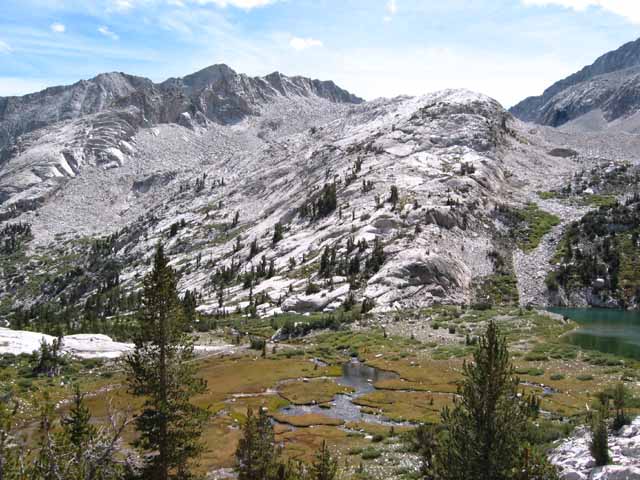 |
| Lake in Upper LeConte Canyon being restored to frog habitat (John Muir
Trail at left). Photo © Peter Stekel |
Even after nearly 125 years of predator pressure, large numbers of mountain yellow-legged frogs were still common as recent as the 1970s. Some alpine lakeside areas had so many frogs you could hardly avoid stepping on them. Since the first biological survey of the Sierra Nevada, done by Grinnell and Storer between 1914-1920, an estimated 90% of mountain yellow-legged frog populations have disappeared - mostly within the past few decades.
Crashing populations in the face of heavy predation isn’t unusual so it’s not surprising that mountain yellow-legged frogs face endangered species status. Boiano says that non-native fish species, primarily trout, are the culprits. “They eat the tadpoles and smaller frogs in large numbers.” Over time, “Mature frogs move away or survive on the edges in protected places. Eventually they die out from old age without ever being successful breeders.” That’s probably why frog populations in the Sierra crashed so suddenly.
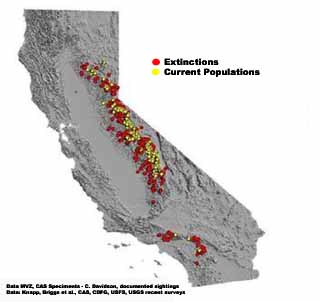 |
| The Mountain
Yellow-legged frog is facing extinction unless efforts to recover former
habitat and solve their susceptibility to Chytrid fungus are successful. Data MVZ, CAS Specimens C.Davidson Data: Knapp, Briggs et al., CDFG, USFS, USGS recent surveys |
Over time, the wider distribution of frogs gets fragmented. “Most high country lakes now have fish and therefore no frogs,” says Boiano. “Where frogs remain, they are isolated, with restricted gene flow. They’re subject to drought, fire, avalanches or many consecutive harsh winters.” Mountain yellow-legged frogs live at high elevations and overwinter under frozen lakes for nearly nine months a year. They typically spend 2-4 years as tadpoles before metamorphosing into frogs.
The NPS is mandated by Congress to reverse impacts caused by non-native animals and plants. Because mountain yellow-legged frogs are a keystone species for the aquatic ecosystem, they’re the glue that helps hold the ecosystem together. “Research has also shown that trout have a negative affect on large aquatic invertebrates like caddisflies, stoneflies and water boatmen by eliminating or reducing them,” says Boiano. A huge ecological shift results from depleting populations of bugs and frogs because they are an important food source for native birds as well as the western terrestrial garter snake. Less food for birds causes their populations to decline also.
At first glance, the news seems bleak but there are hopes the frog’s population can rebound. Working creatively with a small budget, Boiano and his team have begun to bring the frogs back, starting with some small ponds in upper LeConte Canyon in Kings Canyon National Park. Teams working through the University of California and with other federal agencies are doing the same elsewhere in Sequoia and Kings Canyon National Parks.
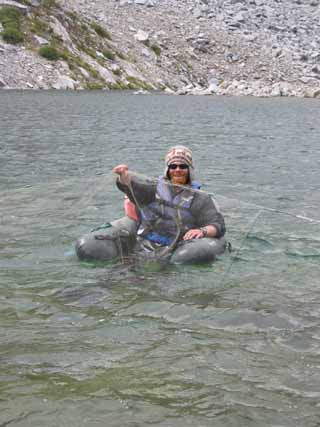 |
| Matthew Van Scoyoc pulls a gill net across a shallow lake in order
to catch any fish that may be there. The fish will eat tadpoles and young
frogs. Photo © Peter Stekel |
The technique for re-establishing the frogs is incredibly simple. “We go to a remote area of watershed,” explains Boiano, “and remove fish from small and shallow lakes.” They do this with a mixture of gill netting in lakes and electro-fishing in streams. No chemicals are used since this would contravene Park Service goals.
For those people quick to envision gaggles of wranglers chasing after and capturing frogs in buckets and then dumping them into lakes, Boiano reminds us, “We’re removing trout, not moving frogs.” Once the fish are gone, it doesn’t take long for the frogs to return - as long as a population of the amphibians has been able to hang on nearby. Since frogs are hardly ever further than a hop away from water, any survivors have been hanging on in moist areas not impacted by fish.
Boiano's study site has garnered impressive results. Before removing fish from a lake in 2001, they counted 166 frogs (including 51 tadpoles). By 2004, after the fish were nearly eradicated, almost 18,000 individuals (3,600 frogs and 14,000 tadpoles) were counted.
“In our restoration areas we see an almost immediate reversal of ecological damage,” says Boiano. “The system responds dramatically and quickly, which means we are doing a good thing.” Not only do the frog populations bounce back, so do the large aquatic invertebrates as well as avian populations, like the Brewer’s blackbird.
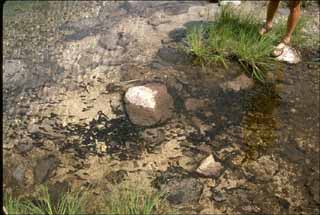 |
| A healthy population of tadoles in a Sierra lake. Photo © Vance Vredenburg |
Though he recognizes the value of removing trout from some lakes and streams, Boiano knows the value of angling too. “I love fish,” he says. “In their native systems, fish are incredible!” He grew up fishing for large-mouth bass in Connecticut and credits that experience with fostering his love of nature inspiring him to study aquatic biology. “Fish are one of the oldest taxa, representing 450 million years of evolution. I am in love and in awe of them!”
The response from backcountry users to re-establishing the mountain yellow-legged frog has been positive, with support running at well over 90%. “A smaller proportion of the people we encounter are anglers and they’re open to the idea too,” says Boiano. Especially when they realize that in Sequoia and Kings Canyon National Parks, “About 400 lakes have trout and we’re removing trout from eleven of them.”
It was once common for visitors to hike the High Sierra and see mountain yellow-legged frogs everywhere. It was exhilarating and exciting to experience this and, due to the work of people like Danny Boiano and others, hikers will some day be able to experience it again.
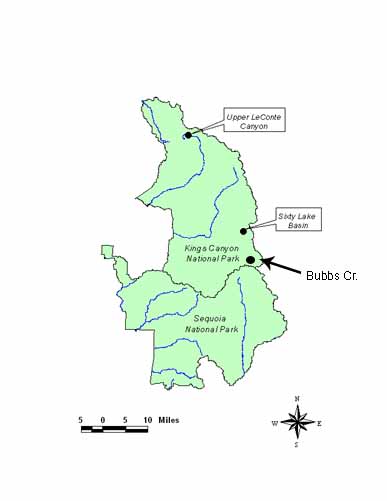 |
Of
the thousands of lakes in Sequoia and Kings Canyon National Parks,
fewer than 11 are having fish removed for Mountain Yellow-legged
frog recovery. |
This
article first appeared in a different format in Sierra
Heritage magazine.
Further
Reading
Rana
muscosa:
Mountain Yellow-legged frog (Amphibia Web) includes photos, sound
recording of call, life history and research papers.
The Mountain Yellow-legged Frog: Can They be
Saved?
by Vance Vredenburg, Ph.D
A Summer Spent Saving Frogs: Applying Research
to the Real World
by Ryan Peek
Biology Department, UC Davis
FOLLOWING
THE FROGS The
continuing effort to find and save the mountain yellow-legged frogs
of the Sierra Nevada
by Casey Ray
Field
Biologist, Sierra Nevada Aquatic Research Lab (SNARL)
The AmphibiaWeb Watch List (extinct, missing or endangered amphibians of the world, with map).
With
Recovery Efforts Underway, Danger still exists for the frogs
by Peter Stekel
Our Founder Questions? Go to About Our New Site |
Masthead
Photo from: |